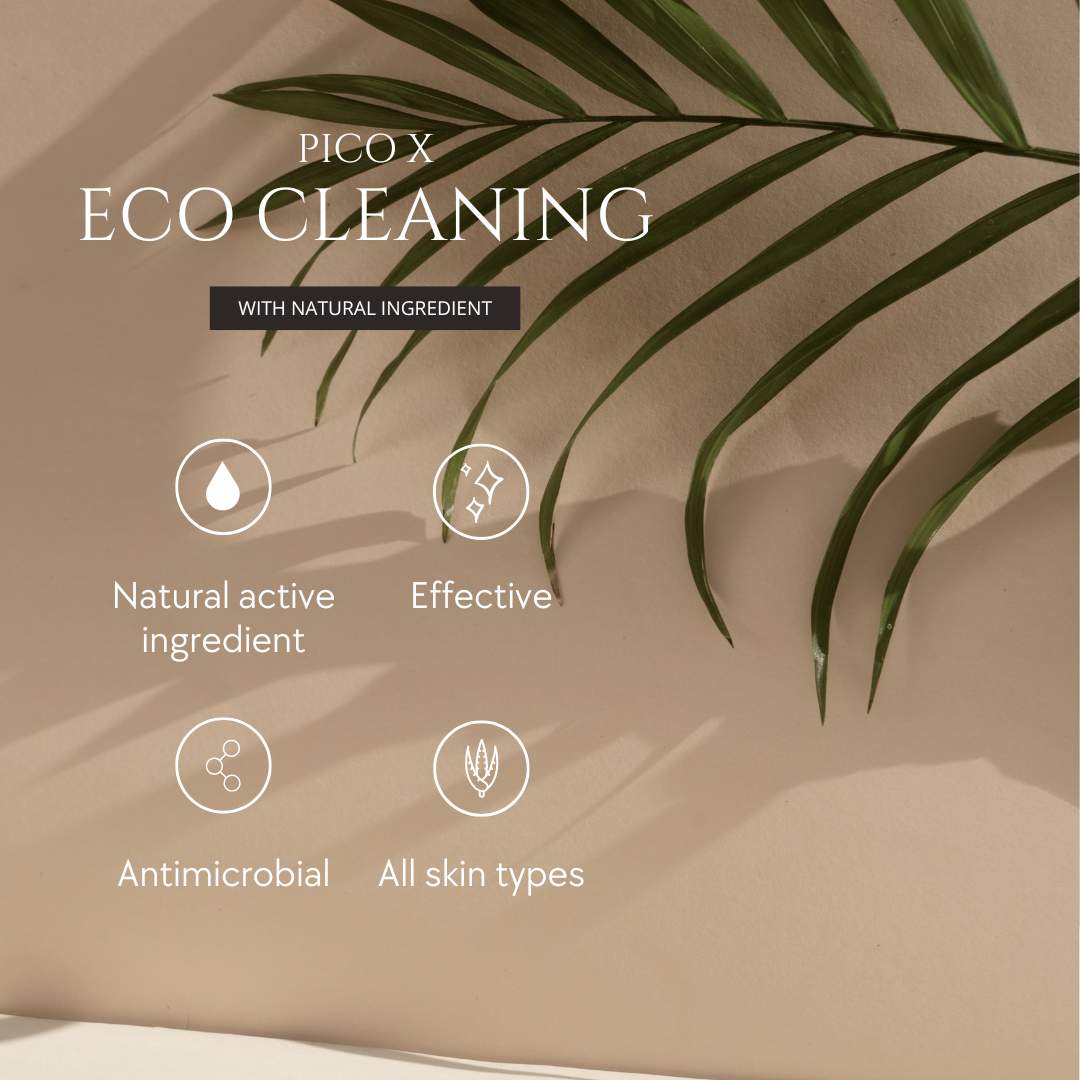-

Adoption of Antimicrobial Coating In The Hospitality Industry
-

Antimicrobial Coated Mattress For A Safe Night's Sleep
-

A safe way to improving indoor air quality and prevent mould at home.
-

Antimicrobial Coatings on Mattresses
-

Antimicrobial Coatings: A Revolution in Home and Commercial Space Hygiene
What is an antimicrobial coating?
- 14 min reading time
The modern world is full of amazing discoveries and innovations. With technology, the human race keeps on improving and improvising new things. There are many varieties of coatings available, which can be used to cover a plethora of surfaces. One example is antimicrobial coatings, which are truly a gift of science. These coatings are made of compound materials that have numerous beneficial qualities. Yes, they affect the appearance of the surface. But in addition, these coatings also play a significant role in protection and prevention. Antimicrobial coatings are used widely to protect surfaces and humans too. Get to know all the details with this guide of antimicrobial coatings, from the materials used, to benefits and risks.
What is an Antimicrobial Coating?
Antimicrobial coatings use chemicals to hinder the growth of pathogens through cellular membrane perturbation. In layman terms, an antimicrobial coating is an application of a chemical agent on a surface that can stop the growth of disease-causing micro-organisms. Apart from increasing the surface’s durability, appearance, corrosion resistance, etc., these coatings also protect from harmful disease-causing microbes.
What is the Need of Antimicrobial Coatings?
As revealed by the European Center for Disease Prevention and Control, more than 4 million people acquire a Healthcare-Associated Infection (HCAI) each year, which results in 37,000 deaths. Combatting HCAIs is a significant problem for the healthcare sector around the globe. HCAIs are the sixth leading cause of death in western countries. In developing countries the situation is worse.
There is an increase in the need to protect surfaces from germs and microbes. This is not only true for healthcare devices/surfaces. The need is more widespread. From surfaces, equipment and walls, to textiles and food, everything is susceptible to microbes, which ultimately find their way to human beings. It is not possible to always clean, disinfect or use strong chemicals on surfaces to prevent the growth of germs. In this scenario, antimicrobial coatings seem to be the best option. It is a simple process of coating the surface with antimicrobial agents, leading to a more secure and long-term solution.
How Are Antimicrobial Surfaces Made?
Obtaining a surface that can hinder the growth of microbes can be attained through two methods. The first method is a physical modification, which comprises material alteration and surface roughness. The second method involves chemical change. Chemical changes include grafting of polymers, superhydrophobic surfaces, use of nanomaterials and coatings. These coatings include self-cleaning coatings and coatings with antimicrobial additives. The safety level, industry norms and the specific use of the coated object are kept in mind when choosing the most suitable antimicrobial coating.
What Materials Are Used in Antimicrobial Coatings?
- Graphene materials: Graphene materials consist of antimicrobial materials like fullerenes, graphite, graphene oxides, pristine graphene sheets and graphite oxides. These materials can impact the growth of microbes due to their disrupting the bacterial membrane, oxidative stress, and entrapment of micro-organisms.
- Graphene-like two-dimensional materials: Here, raw and chemically exfoliated MoS2 sheets are used as graphene-like, two-dimensional materials owing to their anti-bacterial activities.
- Polycationic hydrogel: Polycationic hydrogel consists of an antimicrobial hydrogel that is based on dimethyl-decyl ammonium chitosan-graft-poly(ethylene glycol)methacrylate poly(ethylene glycol)diacrylate. The material is believed to cause microbial death.
- Silver nanoparticles: Silver nanoparticles have a bactericidal effect within a 1-10 nm range and are size-dependent.
- Polymer brushes: There are three types of polymer brushes that are used in antimicrobial coatings: functionalized polymer brushes, brushes comprising bactericidal polymers and non-fouling polymer brushes.
- Dendrimers: Dendrimers are used in antimicrobial coatings due to their ability to traverse the cellular membrane.
- Copper and its alloys: Copper, as well as its alloys like bronze, brass, copper-nickel-zinc and cupronickel, are known to be natural antimicrobial elements. These elements can inhibit the growth of and destroy disease-causing micro-organisms.
How Are Antimicrobial Coatings Tested?
There is no specific test mentioned by the antimicrobial sector as a single test to prove the efficacy of antimicrobial coating. However, several test methods have been developed by different organizations to meet industry standards. Some of these tests are coined by the American Society for Testing and Materials (ASTM), American Association of Textile Chemists and Colorists (AATCC), Japanese Industrial Standard (JIS), and International Organization for Standardization (ISO). The tests help gauge the performance of an antimicrobial coating in combatting the growth and survival of microbes.
These tests are designed for specific fields of use, material or antimicrobial technology. As a result, it is difficult to choose one method. However, an example of standards is ISO 22196 (JIS Z 2001) for antibacterial coating by manufacturers. Antifungal test methods are ASTM G21 or AATCC Method 30, Part III. Similarly, ASTM E2149 is used to detect antimicrobial activity after one hour exposure, and ASTM E2180 is used to detect the antimicrobial activity after 24 hours of exposure on textiles. Also, ASTM G21 is used to determine resistance against black mold and fungus.
Where Are Antimicrobial Coatings Used?
Today, antimicrobial surface coatings find use in several consumer and industrial applications, apart from the healthcare sector, such as:
- Industrial
- Commercial
- Building products
- Outdoors
- Housewares
An essential requirement of antimicrobial coatings is in the medical field. All healthcare facilities face the risk of HCAIs. Antimicrobial coatings help to reduce the spread of germs through common areas like switches, doorknobs, etc. Further, the coatings are used on catheters, surgical devices, medical electronics, medical instruments, trays, etc., to minimize the risk of infection during medical procedures. They are now even used for hospital fabrics, including gloves, surgical masks, wound dressing, bandages, woven hospital textiles and non-woven hospital textiles. Innovation in the field has led to the use of these coatings in medical implants too.
Antimicrobial coatings are useful for a variety of buildings like schools, office buildings, restaurants, public venues and residential buildings for long-term protection from disease-causing microbes. They are also used vastly in maintaining the indoor air quality in air handling systems, like ventilation, heating, air-conditioning, ceilings and fans. The coatings are effective in combating mold growth and regrowth on various surfaces like automotive components, walls, ceiling pipes, etc.
Antimicrobial coatings have made their way into the food sector as well, finding use in food processing units, dairy, large-scale production, as well as in the utensils and containers used in the process. In the textile sector, they help provide durability, freshness and stain resistance to fabrics.
What Are the Benefits of Antimicrobial Coatings?
As mentioned earlier, there is a widespread growth in the use of antimicrobial coatings for not only the industrial and healthcare sectors where they are most needed, but also for domestic use. Following are some of the benefits of these coatings.
Protection Against Microbes
First and foremost, these surface coatings protect against the growth of various microbes like bacteria, fungi, algae, mold, etc. Research has shown that the application of these coatings on surfaces inhibits the growth of different microorganisms. A surface becomes an unfavorable environment for microbes to grow and survive as long as the coating is applied to it. It also leads to preventing staining, the presence of any bad odor, or degradation of the applied surface.
Fewer Disinfectants Needed
The use of antimicrobial coatings on surfaces reduces the need for harsh cleaning agents and disinfectants required to deal with stubborn microbes in public facilities. This gradually leads to a reduction in the environmental impact of using these cleaning agents in buildings, especially medical facilities.
Health and Cleanliness
Consider the case of an office, school or hospital where there are a large number of people. There is a high probability of the spread of infections in such places. The presence of an antimicrobial coating on surfaces helps to combat the spread of these infections or diseases to a large extent. The coatings protect the high-volume trace points like doorknobs, switches, railings and furniture. Further, they contribute to cleanliness by decreasing the presence of bacteria and germs in the air.
Cost-Effective
Antimicrobial coatings help reduce maintenance costs. When the coating is applied on a surface, it prevents staining, discoloration, leeching or other factors that affect the look of the object. It saves the extra financial burden and labor that would have been required for the upkeep or replacement of these objects.
Increased Lifespan
Protection from microbes coupled with the maintenance provided by antimicrobial coatings increases the general lifespan of objects, as they are protected against discoloration, odor and other damage caused by microbial activity.
Infrastructure Value
The application of antimicrobial coatings not only protects surfaces but also contributes to the infrastructure standard as a whole. The existence of these coatings enables organizations to provide a safer and cleaner environment for the people in it. The use of these coatings on surfaces carries a more profound message that organizations do care about the safety and atmosphere that they provide to people. It certainly adds to the value of the building and its overall infrastructure.
What Are the Risks of Antimicrobial Coatings?
While there are enormous benefits of antimicrobial coatings, there are some drawbacks. The various risks associated with the use of the antimicrobial coatings on surfaces include the following:
- The antimicrobial coating can emit active ingredients that might slowly enter the ecosystem, causing health hazards in the long run.
- The active ingredients that are released from the coatings containing silver, zinc and copper could have toxic effects on fish, crustaceans, algae, etc. Such toxic ingredients consumed by fish are eventually consumed by humans.
- Similarly, the use of antimicrobial coatings on fabrics to prevent microbial growth could lead to toxins being introduced in the wastewater, ultimately harming the marine environment.
- The slowly infused and emitted active nano-ingredients may result in different or new adaptive microbes such as drug-resistant bacteria.
- Most of above cases are a result of biocidal antimicrobial coatings that leach out ingredients to kill microbes. Flora Coatings has developed a biostatic antimicrobial coating called Invesil that does not leach ingredients and is deemed safe.
Safe Use
The Scientific Committee on Emerging and Newly Identified Health Risks (SCENIHR) insists on ‘prudent use of antimicrobials.’ As a result, there has been a universal need for the design of safe antimicrobial coatings. It has led to the Safe-by-Design concept, which emphasizes the need for designing a product eliminating hazardous material. It highlights the control of the release of antimicrobial elements from the coating. It could also be designed to target some specific microbes without harming the other bacteria. Further, there is a need for using an appropriate production process that takes care of all the safety requirements. A study has suggested the treatment of hospital wastewater to stop it from affecting marine life.
New technologies have evolved with various research in the field. Polymers, safe bacteria-repelling surfaces, and other innovative technologies have been used to neutralize the adverse effects of antimicrobial coatings. Products are now being designed with safety, convenience and cost effectiveness as a priority.
Today, technology is used widely in the field of medicine with proper safety norms and utmost care. In the case of medical implants in a body, there is a high chance of bacterial infection. Also, it is difficult to remove and replace implants frequently. So before being placed in a person’s body, medical implants are treated with non-toxic, bio-stable and bio-compatible anti-bacterial agents.
What are Antibacterial and Antiviral Coatings?
It is well known that bacteria are living microbes that can be killed with the help of antibacterial agents, while a virus is a nonliving pathogen and cannot be killed but only deactivated. Also, a virus has a negatively charged exterior membrane that can be destroyed by solvents, certain UV frequencies, heat, spikes, extreme positive charges, or metallic ion interference. Most protonated solvents like alcohols and surfactants (or soaps) can break the exterior protein of a virus. Once the protein is destroyed, the virus cannot attach to cells and transfer or alter human ribonucleic acid (RNA). Theoretically, the thickness of an antiviral coating must be more than the average roughness of the surface. Most solid surfaces have an average roughness in the micron range. It can therefore be presumed that an effective coating would have a thickness in the micron range. There are numerous commercial products claiming the deactivation of viruses through coating chemistry. However, lack of proper testing protocols questions the accuracy of such claims.
What is the Market for Antimicrobial Coatings?
According to the Grand View Research Report, in 2015 the global market for antimicrobial coatings was estimated at $2.44 billion. The 2019 report states that the market is expected to grow at a CAGR of 11.5 percent between 2019 and 2024. In 2019, the antimicrobial coating market achieved $2.8 billion, and by 2024, it is estimated to reach $5.4 billion. The antimicrobial coatings market is deemed to increase significantly due to the current COVID-19 pandemic crisis. The demand for antimicrobial coatings comprises silver, copper and other antimicrobial coatings.
The primary application areas are:
- Medical
- Indoor air quality systems
- Mold remediation
- Textiles
- Food and beverages
- Building and construction
Worldwide governments are concerned about HCAIs. So there is an increase in demand for antimicrobial coatings, which are considered to play a vital role in preventing the spread of infections. The market is seeing a steady growth in North America and Europe, where governments are taking significant steps in creating awareness about the utility of these coatings. North America is the largest market due to the high medical and living standards in the United States. The government has imposed strict rules to deal with HCAIs in North America and Europe. Silver antimicrobial coatings are in high demand in North America. Some of the top manufacturers in the market of antimicrobial coatings are:
- Axalta Coating Systems
- BASF
- AkzoNobel
- RPM International
- PPG Industries
- Sherwin-Williams
What is the Future of Antimicrobial Coatings?
The antimicrobial coating sector is brimming with activity. Research and innovation continues to provide better, safer and innovative antimicrobial coatings that are affordable. The reason behind the research is the steady growth in demand in North American and European countries. There has also been an increase in demand in Asia-Pacific, Africa, Latin America and Middle East regions as well.
Further, there is a massive cry for the controlled release approach. All these factors are leading to a sharp increase in demand, coupled with innovation. Future antimicrobial coatings will have to fulfill all functions through integration. Also, the need for antimicrobial coatings will spread to more and more public buildings. The future might see antimicrobial coatings in practically all buildings as an easy way to keep germs away as well as maintain a healthy environment.
Conclusion
The rapid growth of the antimicrobial coating market in terms of demand, as well as a call for improvement, is paving a path for a new scenario in the market in the future. The industry is witnessing growth from multiple directions. On one hand, there is a sharp increase in global demand, owing to the rise in awareness about the advantages of these coatings, while on the other hand, market forces are putting pressure on conducting further research in the field, leading to better products in terms of safety and cost. Also, new materials are being explored as well as new areas. It seems as if the antimicrobial coating sector is going to witness a historical revolution very soon.
Disclaimer: This article is written to educate or inform readers about antimicrobial coating technology. No attempt has been made to endorse any product or create a comparison or superiority of a product over another. The text written here is a view of the author and has nothing to do with the company Flora Coatings. Information shown here is the best to the author's knowledge and does not claim complete accuracy.
Tags
-

Best Fabric Refresher 2023
-

Looking for the Best Cleaning Services in Singapore?
-

Benefits Of Essential oil Based floor cleaners - Eucalyptus, Clove and Tea Tree
-

Top ten cleaning services in Singapore?









